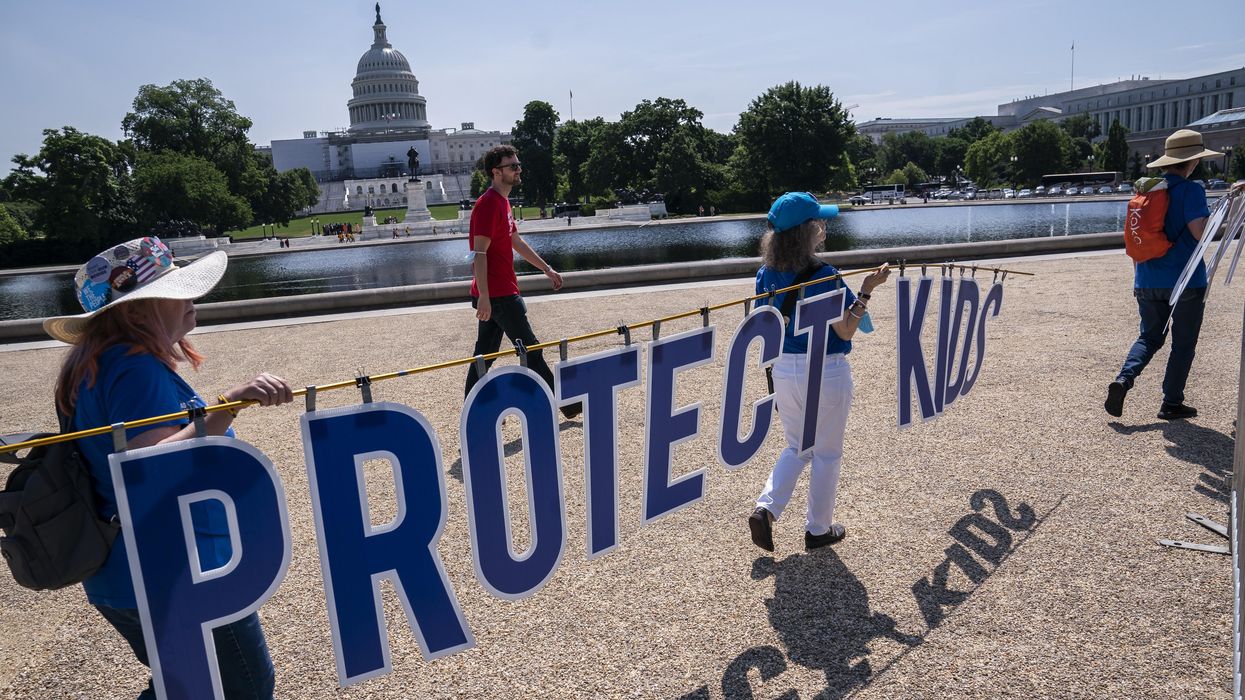Weichlein is the CEO of FMC: The Former Members of Congress Association.
As we are dealing yet again with the horror of our children falling victim to a mass murderer, let’s keep our focus squarely on what unites us, because within hours of the news breaking, the political and media voices that benefit from keeping us divided were already out in full force.
Regardless of political persuasion, whether we are gun owners, who we voted for in the last presidential election, and what our ZIP code is – we all agree that America is in a gut-wrenching and heartbreaking pattern of school shootings, followed by outrage, followed by inaction. There isn’t one rational American who didn’t react to the news from Uvalde, Texas, with despair, followed by anger that yet again a madman could spread carnage and end young lives in an instant. These days we are not united by much but, surely, we are united by anguish over innocent lives lost and fear for our own children and grandchildren. How is common grief not enough for a call to action and a demand of Congress to overcome differences in search for solutions?
There’s no party label when it comes to gut-wrenching sorrow over 19 murdered fourth graders and two heroic teachers trying to shield them. Parents and grandparents, regardless of where they are politically, hugged their little ones tighter upon hearing the dreadful news. Republicans and Democrats alike expressed their grief and anger that yet another madman ripped a community apart. But almost as tragically, that’s where the common ground ends. Like so many other aspects of life in today’s America, we’re letting the extremists dictate policy and we’re allowing those who benefit from keeping us divided control the narrative. How, after Newtown and Parkland and now Uvalde, have we not moved even an inch closer to coming together, across the political aisle, and committed ourselves to finding compromise and solutions that most assuredly will save innocent lives in the future? Because fear-mongering voices from both extremes of the political spectrum won’t let the rest of us unite behind common sense answers.
The numbers vary depending on when polls are conducted, but a majority of Americans support making changes to our gun laws. Yes, stark differences between the parties appear immediately when pollsters narrow their questions to specific initiatives such as banning assault weapons or closing certain loopholes but, overall, the majority of Americans want to at least try to break this cycle of mayhem and madness. A 2021 Pew Research Center poll found broad support when it comes to red flag measures and background checks, for example. And that number includes a large percentage of gun owners and NRA members.
That support in a poll, however, does not translate into empowering Congress to actually act. Instead of turning grief into honest and productive back-and-forth on a crisis that literally terrorizes parents and children, we have settled on a tragically predictable chain of events: mass shooting ... thoughts and prayers ... politicizing the dialogue and demonizing your political opponent ... inaction ... repeat. And the pundits on the far right and the far left punish any member of Congress who is willing to give an inch in order to take a mile. You get punished by whatever cable news channel your constituents tune into. And, more importantly, you get punished by a candidate further to your left or to your right during the next primary, where traditionally only the more radical voters bother to show up, thus giving us more rigidly doctrine-adhering candidates heading into a general election for gerrymandered districts.
We adhere to the all-or-nothing crowd on either the left or the right, who view even the beginning of seeking compromise as a betrayal of dogma. As little children were still fighting for their lives in Texas hospitals, politicians on both sides of the aisle were already feeding their Twitter following the same old talking points, with only the dates and location needing to be updated.
Is there really no middle ground between protecting Second Amendment rights and preventing someone too young or too unstable from purchasing one or more assault weapons? Can we not strengthen our system of background checks while still licensing responsible and law-abiding gun owners? Is it really impossible to put a system in place that allows enough time for red flags to be thoroughly investigated and processed? Can’t we agree that this is not a crisis of either mental health or the vast availability of mass casualty weapons, but rather a crisis of the two combined?
The question is yet again: Will this be the moment that we finally come together as a society and demand better from our elected officials on both sides of the aisle? Will this be the moment when politics is defined by courage, leadership, and a commitment to truly work toward a solution rather than offend distraught parents again and again with the usual playbook of distraction and meaningless talking points? Tragically, I don’t think it is. It wasn’t after Newtown. It wasn’t after Parkland.
Insanity is doing the same thing over and over again and expecting a different outcome. Mass shooting ... thoughts and prayers ... politicizing the dialogue and demonizing your political opponent ... inaction ... Repeat. Repeat. Repeat.






















 Despite signing a mortgage that pledged he would live in each house, Trump listed both homes as rentals. Palm Beach Daily News via Newspapers.com. Redactions by ProPublica.
Despite signing a mortgage that pledged he would live in each house, Trump listed both homes as rentals. Palm Beach Daily News via Newspapers.com. Redactions by ProPublica.
 In 1993, Trump signed a mortgage for a “Bermuda style” home in Palm Beach, pledging that it would be his principal residence. Just seven weeks later, he got another mortgage for a seven-bedroom, marble-floored neighboring property and attested that it too would be his principal residence. Obtained by ProPublica
In 1993, Trump signed a mortgage for a “Bermuda style” home in Palm Beach, pledging that it would be his principal residence. Just seven weeks later, he got another mortgage for a seven-bedroom, marble-floored neighboring property and attested that it too would be his principal residence. Obtained by ProPublica